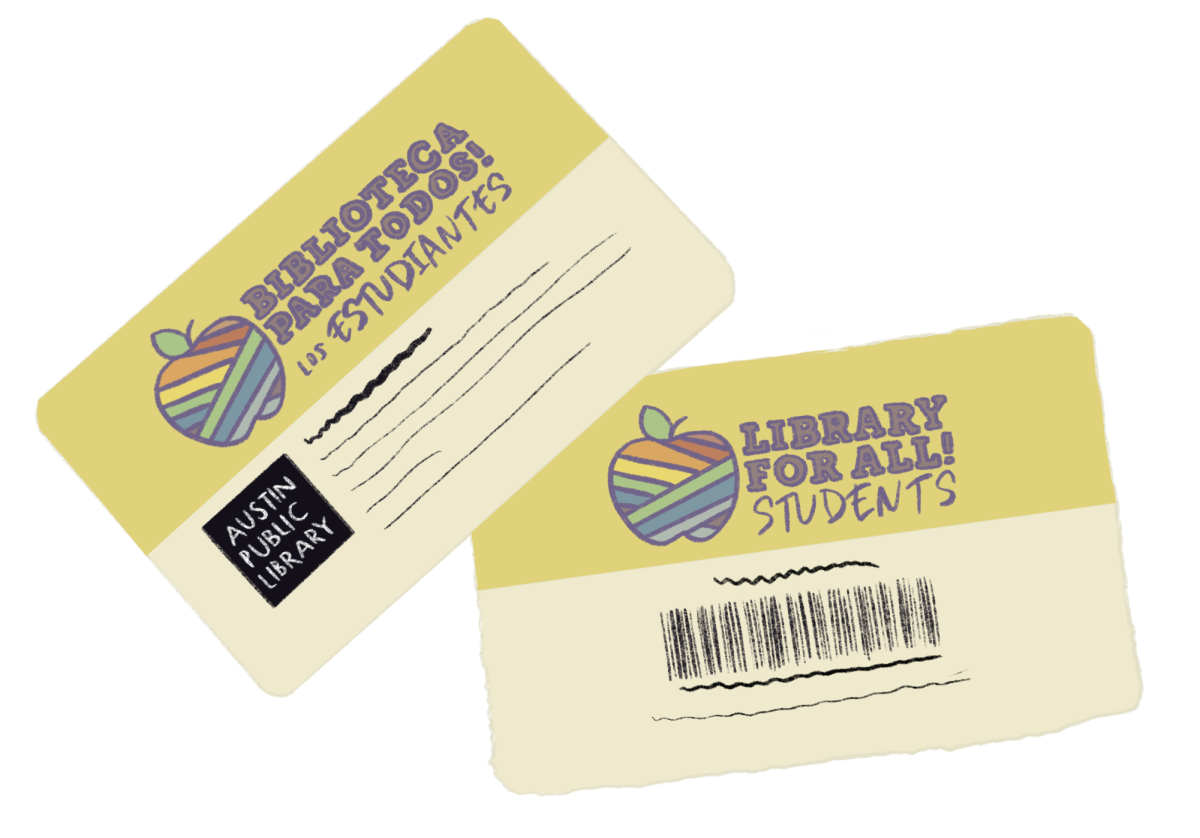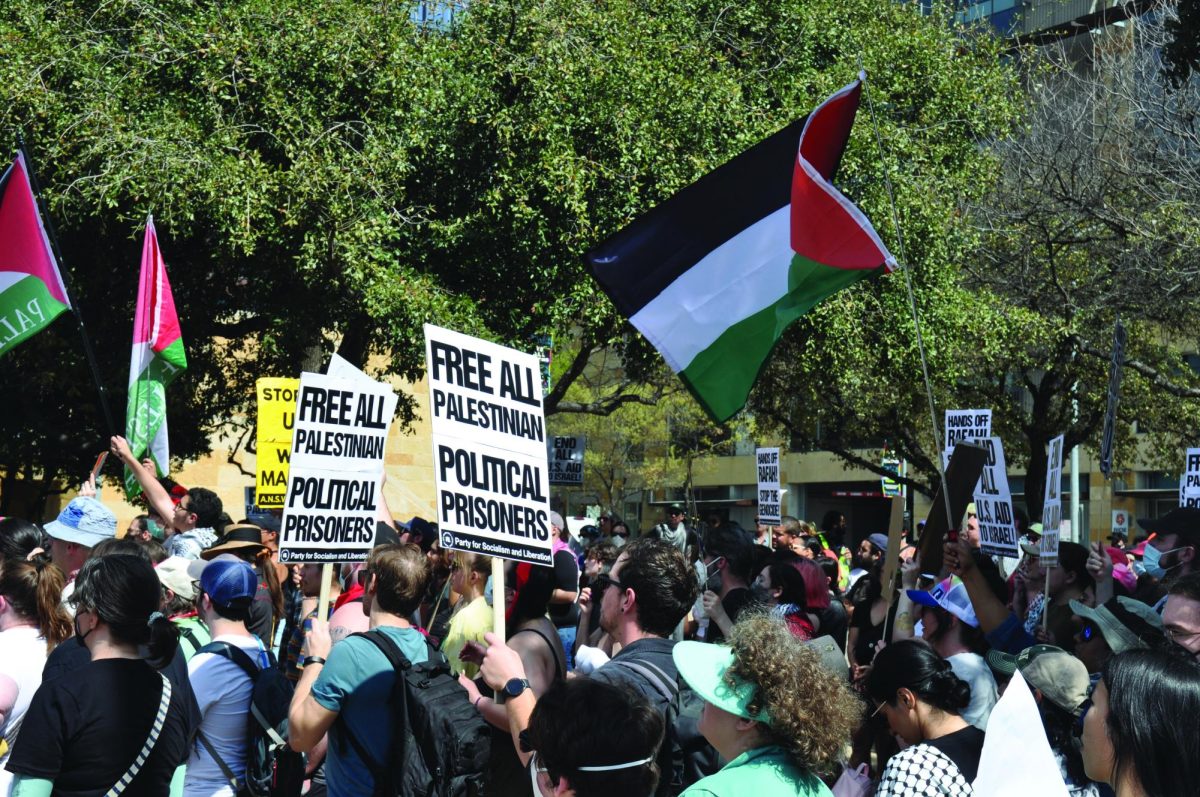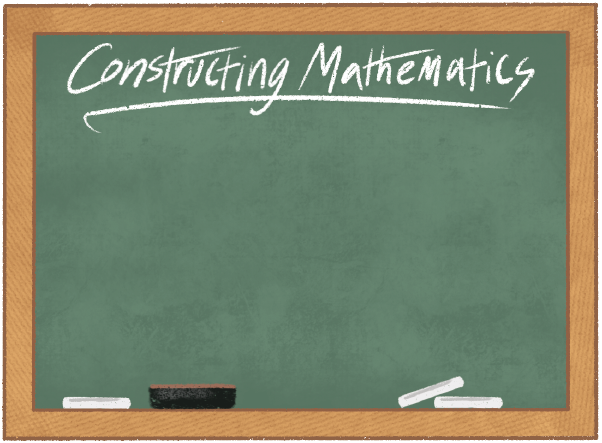
Founded in 1973, the Liberator has been on a mission to provide fresh, reliable news brought by students, and is now celebrating their 50th anniversary as a publication. In the past 50 years, the Liberator has evolved in the visual formatting and the content it covers.
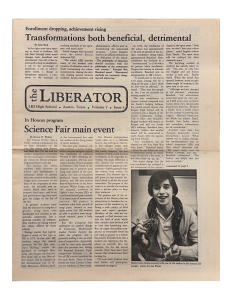
Former editor-in-chief Eli Durst, who was on the Liberator staff from 2004 to 2007, mentions that during his time on the Liberator, there were only five sections: News, Sports, Features, Commentary, and Entertainment. Now, the Liberator has seven sections. According to Durst, designing the Liberator was much harder during his time because the team used early versions of iMacs to work, but it was still very fulfilling.
“I mean, it was amazing,” Durst said. “It was definitely a central part of my high school experience. I’m sure you know it’s like a part of your identity. It was a ton of work, especially when we were on deadline, and it was definitely a huge commitment, but one that meant a lot and provided a lot in return.”
Additionally, Durst mentioned that during his time on the Liberator, he and other editors would stay up until 2 a.m. in the newspaper classroom for late nights, days dedicated to editors staying after school to finalize stories and designs to get the newspaper ready for printing. Aside from the dedication Durst said was involved in the Liberator, he also reminisced that a key part of the growth of the Liberator and the experiences it provided was from the past Liberator advisor Janet Elbom who held the newspaper to high standards.
“We were one of the top papers in the country,” Elbom said. “It’s just very motivating, you know, after all the time you spend on it, that somebody really appreciates that. I taught the team how to understand cooperation, because in everything in life you’re not going to be successful if you don’t have cooperation. But also I taught the team how to communicate in writing, how in order to get your information you have to be able to come up with good questions. And interviewing a person isn’t just getting answers to your questions. It’s learning about that person. You have to be a good listener, and just develop, you know, self-confidence and empathy. When [journalists] take those communication skills with them, they can use them for the rest of their lives in whatever they do.”
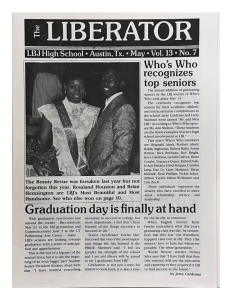
Elbom pointed out that teaching students to be journalists went far beyond just teaching them to write, and also included educating students on how to deal with hard issues, topics, and experiences. She recounted that she saw students take away this core idea throughout their own years on the Liberator with hard interviews or issues, one even being an interview with former U.S. President Lyndon Baines Johnson’s (LBJ) wife, Lady Bird Johnson, after he passed away.
“When the school had its dedication, LBJ had died not too long before that,” Elbom said. “We interviewed Lady Bird Johnson and we took her to the journalism room at LBJ [High School]. My editor was there, my assistant yearbook editor, and then a photographer. And then the Secret Service was there. It is a story I tell when I teach interviewing because my students made her cry. They were pulling up his speeches, and she got so full of emotion. And they kind of looked at me like, ‘oh, shit, what did we do?’”
I learned a lot about the history of LASA… when I was there, we were still in the LBJ building. We were on the top floor, and they were on the bottom floor. So I really went through that issue surrounding that. I wouldn’t have paid attention to those types of things without journalism. — Nia Orakwue
“I think I really loved and I still really love journalism and how much community awareness it forced me to have,” Orakwue said. “It made me pay more attention, and I learned a lot about the history of LASA and about how when I was there, we were still in the LBJ building. We were on the top floor, and they were on the bottom floor. So I really went through that issue surrounding that. I wouldn’t have paid attention to those types of things without journalism.”
Ence Morse, who was on the Liberator from 2015 to 2019 and a former editor-in-chief, also felt that the Liberator gave her a greater interest and context for surrounding issues. For example, she mentions that she felt she was able to address the LBJ and LASA split with more context and statistics because she was on the Liberator.
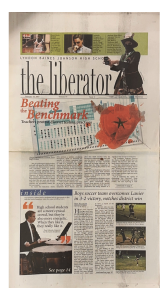
“There was this big issue about the social divide between LBJ and LASA,” Morse said. “The survey found that I think some really disproportionate number of LASA students didn’t have any friends at LBJ. I got 250 responses just like that, which was pretty good.
I mean, there was this whole big double talk about it, and I loved working on that. It was very exciting to sort of be able to put words and figures and analysis to the situation that we were experiencing, and students are able to report on that wall.”
Her experience covering the LASA and LBJ split taught Morse how to be more engaged in her community. She believes that student journalists and publications like the Liberator can be an important driving force for future change.
“It’s very important to have student journalists,” Morse said. “It’s important to have a student voice in places and have them show up to things like CAC (Community Advisory Committee) meetings and taking notes at school board meetings and just being a presence in the community. It makes us engaged. We hold people to account. We’re not just going to leave this all to the adults.”
Along with the LBJ split, Orakwue also spoke on how the Liberator was affected during COVID-19. According to her, all the meetings were on Zoom, the newspapers were shipped directly to people’s houses, and she and her co-editor-in-chief Malena Heineman also had to shoulder more responsibilities when it came to managing the Liberator.
“All of our meetings were on Zoom, which was not the most fun,” Orakwue said. “It kind of made it difficult to like, get people to keep people engaged and to keep tabs on people’s work. In those meetings, especially at the beginning, it also meant that Malena and I did basically all of the design which also increased our workload, but because we were at home I feel like it was okay, it was manageable…the types of things we reported on were different because obviously the world is changing and this really radical way. We definitely made it work and I’m proud of that time.”
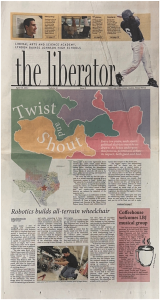
According to former news editor Micah Hauser, who graduated from LASA in 2007, the split from LBJ also affected the Liberator’s policies and what it covered. One of Hauser’s favorite aspects of covering news was the feeling of excitement he felt to conduct interviews and have a degree of rights to the school’s information.
“We felt very kind of in control of what we were doing,” Hauser said. “It was just cool to preside over documents that then got distributed to everyone in the school. I remember that it was fun to be able to go to a class to go do interviews, and be professionally obligated when you’re wearing your Liberator hat to be nosy and relentless about getting information, and also creative in how you are going to tell those stories and lay them out on a page. And I remember just sort of the feeling of having fun being able to ask a bunch of, like, administrators questions about things that you otherwise would not be able to ask them.”
Combining his experience on the Liberator with his experience being an editor on The New Yorker, Hauser’s main advice to journalists is to remember that when interviewing a source, it’s not a violation to ask for information. If a journalist doesn’t have confidence when asking for information, the source will pick up on that and will make the interview more challenging.
“You should sort of approach your reporting like you’re kind of building the stories with a sense of exuberance and entitlement to information that the public deserves to know about,” Hauser said. “End that feeling of ‘oh, I don’t want to bother people’, or ‘I’m like a nuisance to them’ or something. I think sources often will pick up on that reticence in a reporter. And so if you just kind of come in with a huge smile on your face, and act as though you’re entitled to this information, which means you often are, I think that that goes a long way in kind of setting the tone of a challenging interview.”
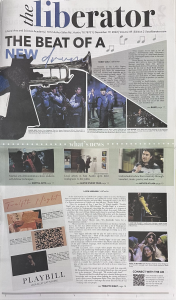
For Hauser, his experience on the Liberator came down to the community the Liberator provided and the experience of creating something together. Similar to Hauser, Elbom mentioned that being on the Liberator was about the community they were able to impact through their news.
“It’s just knowing those kids whose lives you touched,” Elbom said. “Even though it might be a very brief time in the scheme of things that you have touched their lives in, in some way they take that with them. And that’s the true reward. I think it’s kind of the long-term effect because I’m sitting here 11 years after retiring, I did this for 40 years. And I can kind of see the big picture. Not to say things weren’t stressful and all of that, but it was great fun. That’s what I would say, it was great fun, and I enjoyed pretty much every minute of it.”

